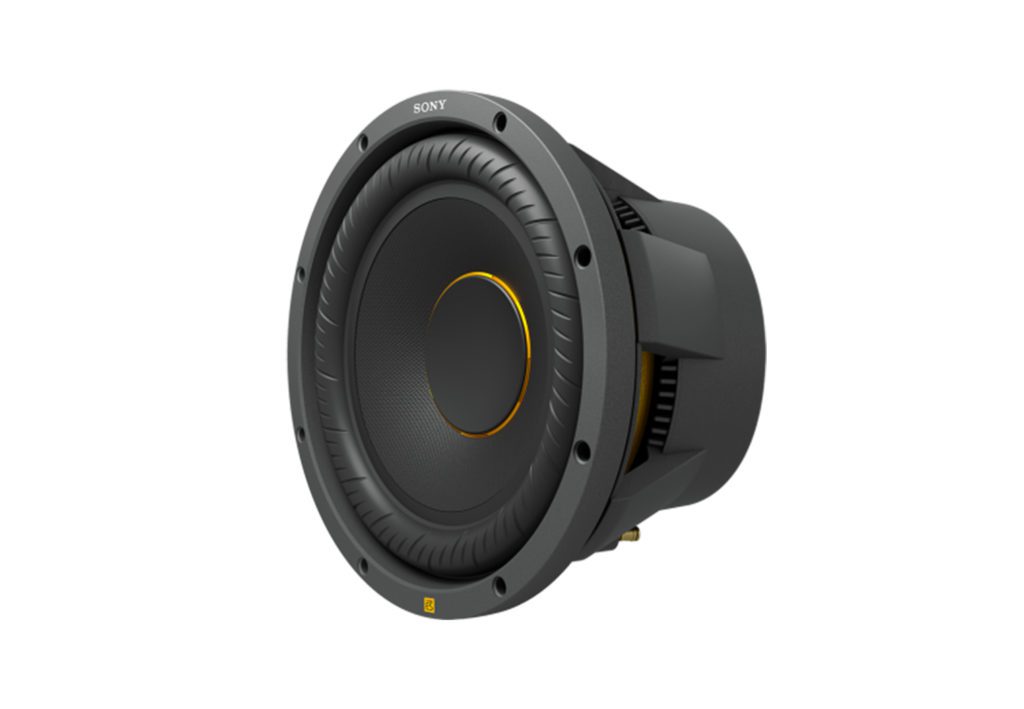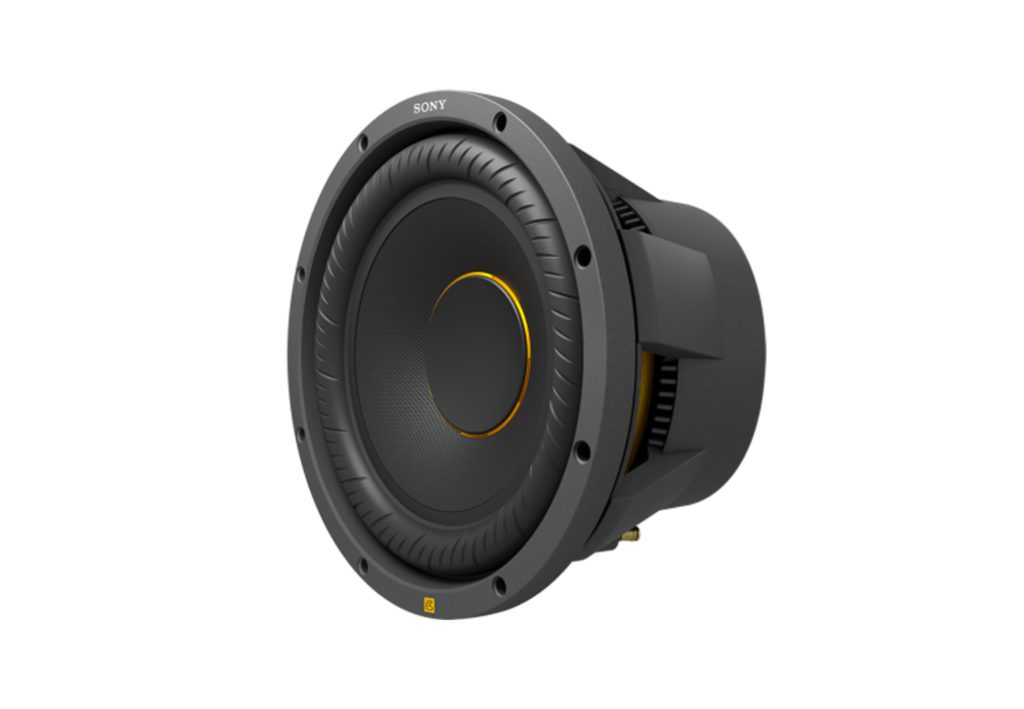Home > Product Installs & Reviews > Product Reviews > Car Subwoofer Reviews > Sony Mobile ES 12in Subwoofers | Review & Unbox
In this article: I'll unbox and review Sony's newest addition to the Mobile ES lineup: the XS-W122ES and XS-W124ES 12in subwoofers. I'll pull them out of the box and give you a closeup look at some of the core features that distinguish these subwoofers.
The XS-W122ES and XS-W124ES 12″ subwoofers are fresh off the press as of April of 2022. Up until this point, Sony has only been offering a 10″ subwoofer as a part of their lineup. I’ve been covering the Mobile ES lineup over the year and a half now, and they keep on adding new products to the lineup. We did a custom stereo in a GTI MK 7.5 last year with the Mobile ES lineup, including the 10” version of these subwoofers, and it was a really impressive system. I knew they were bound to introduce them at some point, but it’s great to see that the 12 inch subs are finally available, and I’m excited to see how they perform knowing how well the 10” sounds.
You may have seen some of the marketing materials, or browsed through the description of these subwoofers on Sony's or Crutchfield's website and wondered:
- What the heck is an lightweight rigid cellular cone?
- Or what is a separated notch surround going to do for my bass?
So in this review, I’m going to give you a closeup of the subs and call out some of the cool features, what they mean and just in general give you a good overview. I won’t be doing any sort of audio testing in this review, but if you’re interested in learning a little more about the technology in these subs, keep reading!
Unboxing & Overview
Sony introduced two new 12 inch subs – a 2 ohm and a 4 ohm so that you can match the specs of your amplifier. But apart from the impedance, these are almost identical subwoofers. There are a few small differences – small as in the XS-W124ES has a minimum 25 hz frequency while W122ES has a 20 hz. The recommended ported enclosure volume is just a hair different. Small differences like this can be found in the specs, but both share a 500 watt RMS rating and 2000 watt peak rating, a 20/25 to 700hz frequency range, the same weight and dimensions, look, etc. But importantly (at least for this review's sake) the two subs share all of the same technology that I’m going to go through.
Here's a few photos of the two subs side by side.
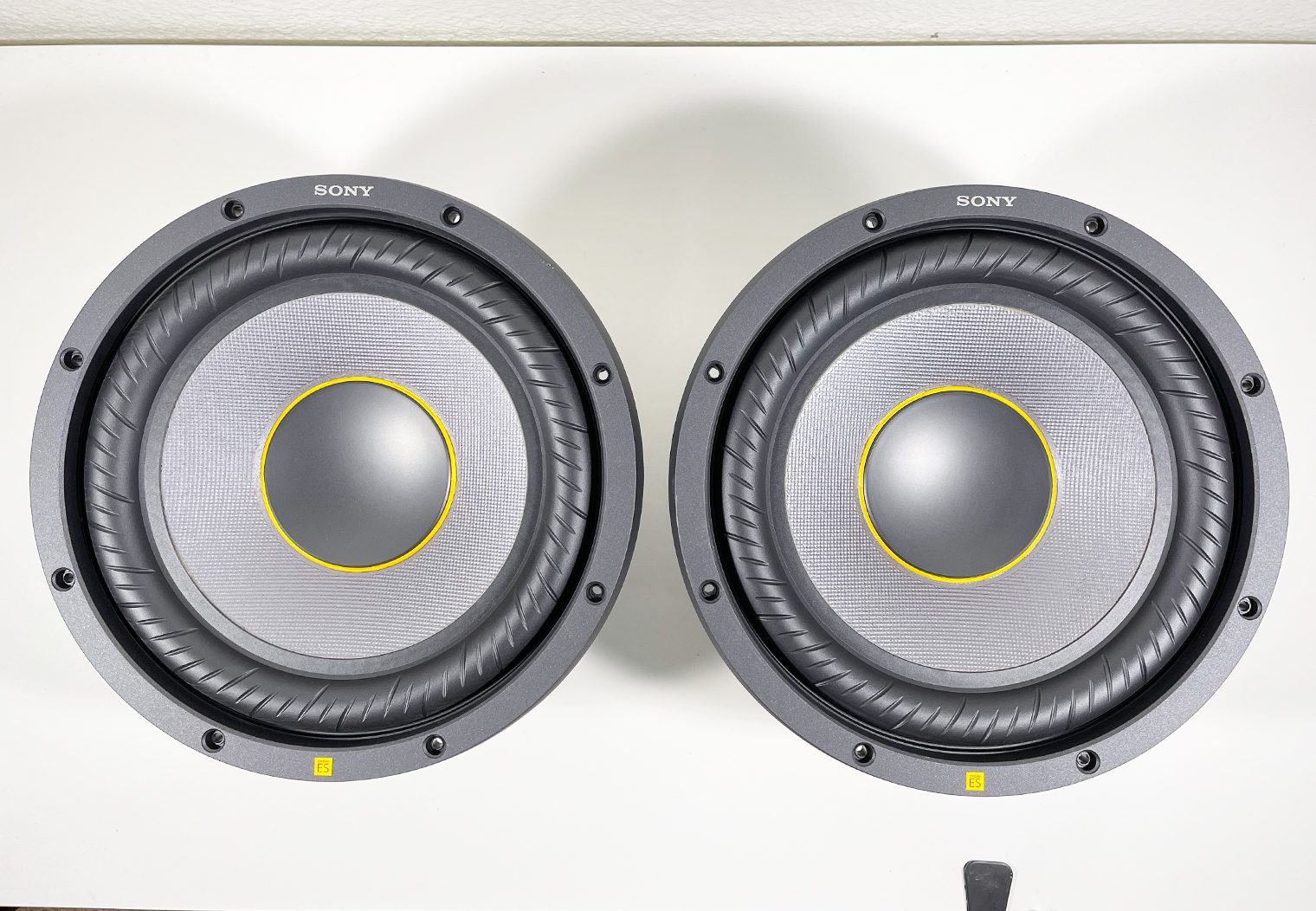
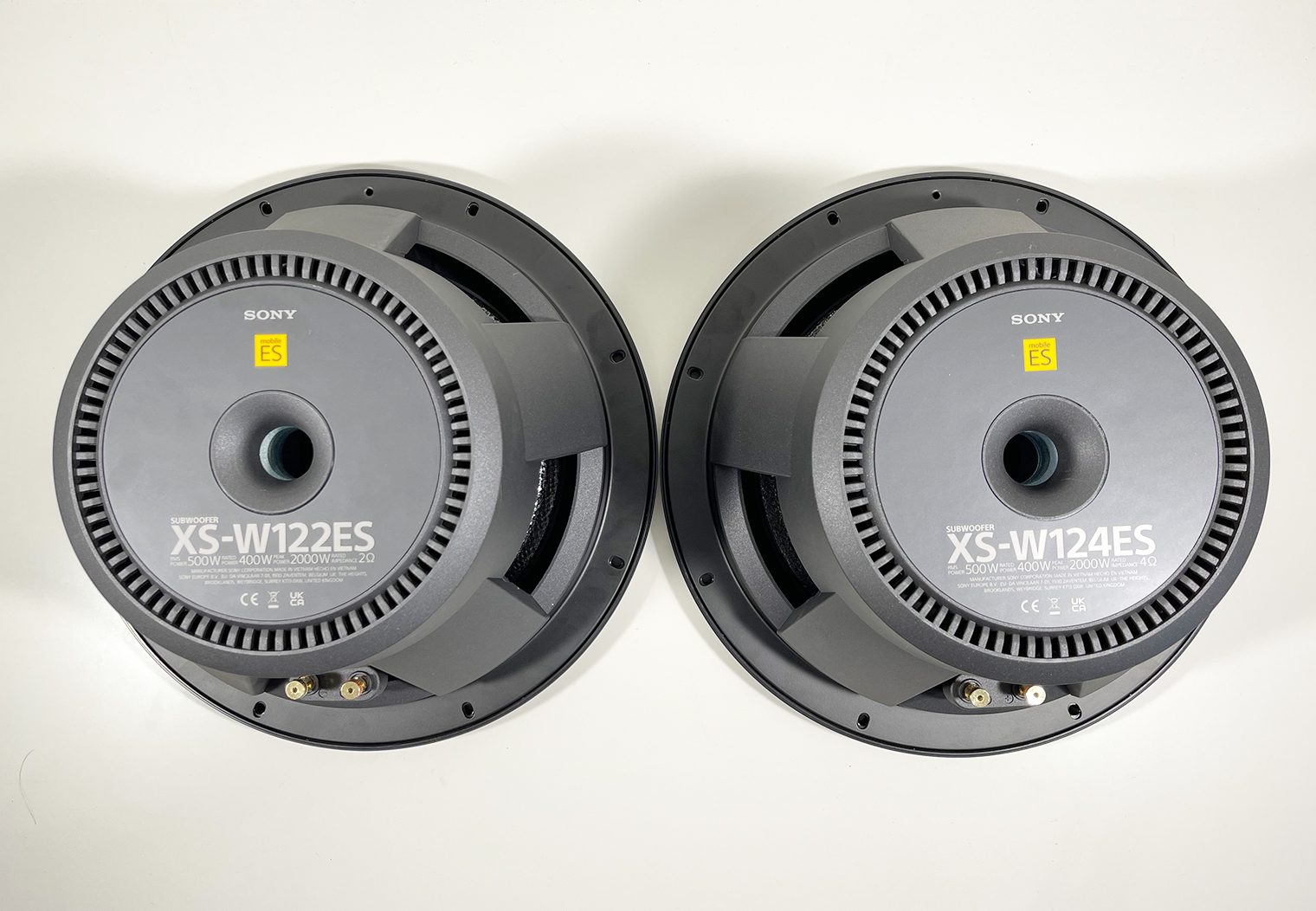
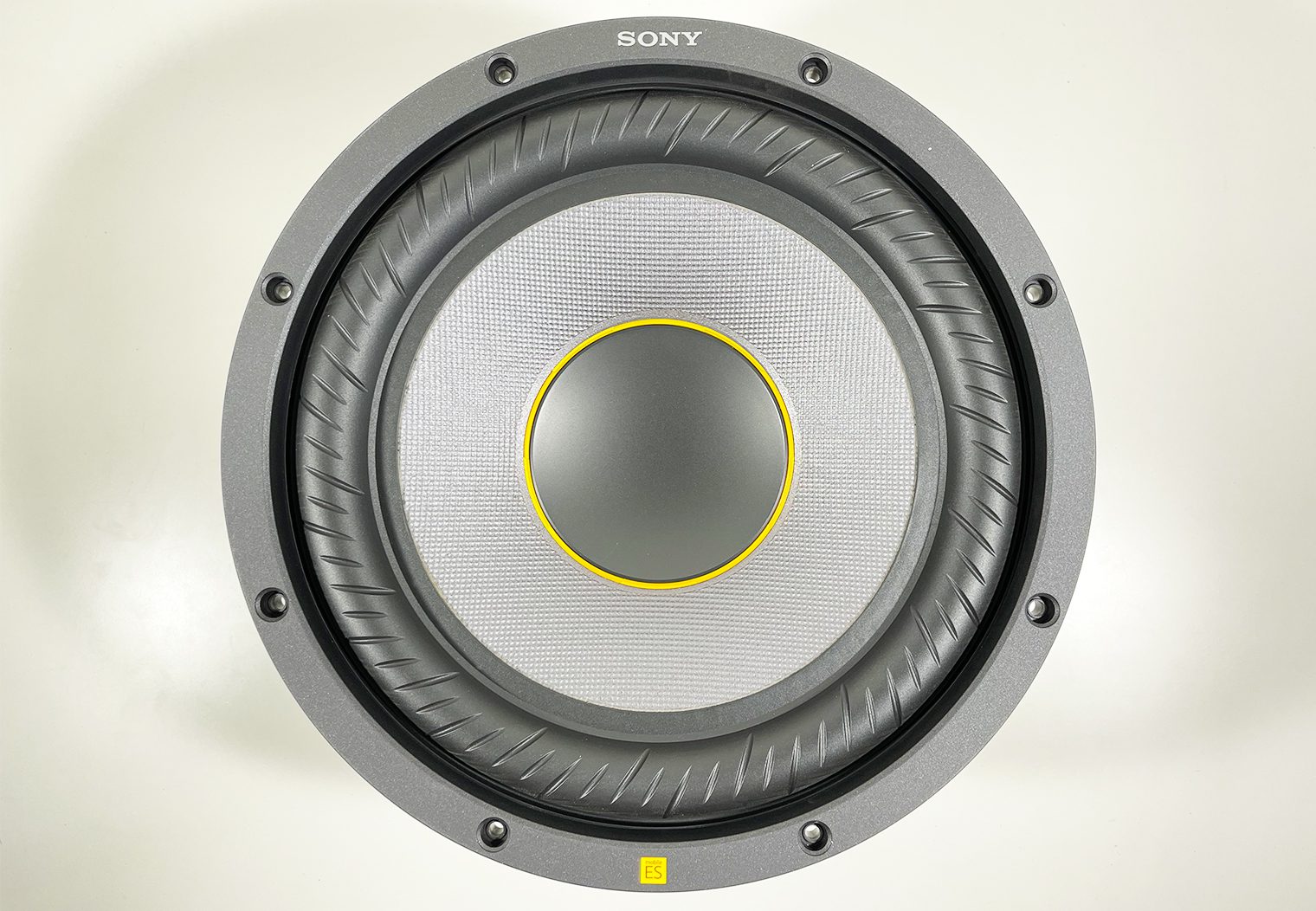
Out of the box, these are stout subs weighing in at a little over 12lbs each. They're definitely show pieces too with the metallic looking cone and the accent center piece. Front and back, they really are a beautifully engineered and assembled subwoofer. So let me start to walk though some of the features on these subs and explain what makes them look and perform well.
Purchase a Sony 12″ Subwoofer
Lightweight Rigid Cellular Cone (Formerly MRC)
First thing’s first – I said this is a great looking subwoofer and I think that the cone really is the focal point of the design.
Every manufacturer at this point engineers their own proprietary material that they use on their premier speakers and subwoofers. Sony’s uses what they call a lightweight rigid cellular diaphragm. They use it on the entire lineup of Mobile ES speakers, but the subwoofer is the only cone that’s pressed in a Honeycomb-like fashion. You can see the little divots that actually look like honeycombs when you look closeup.
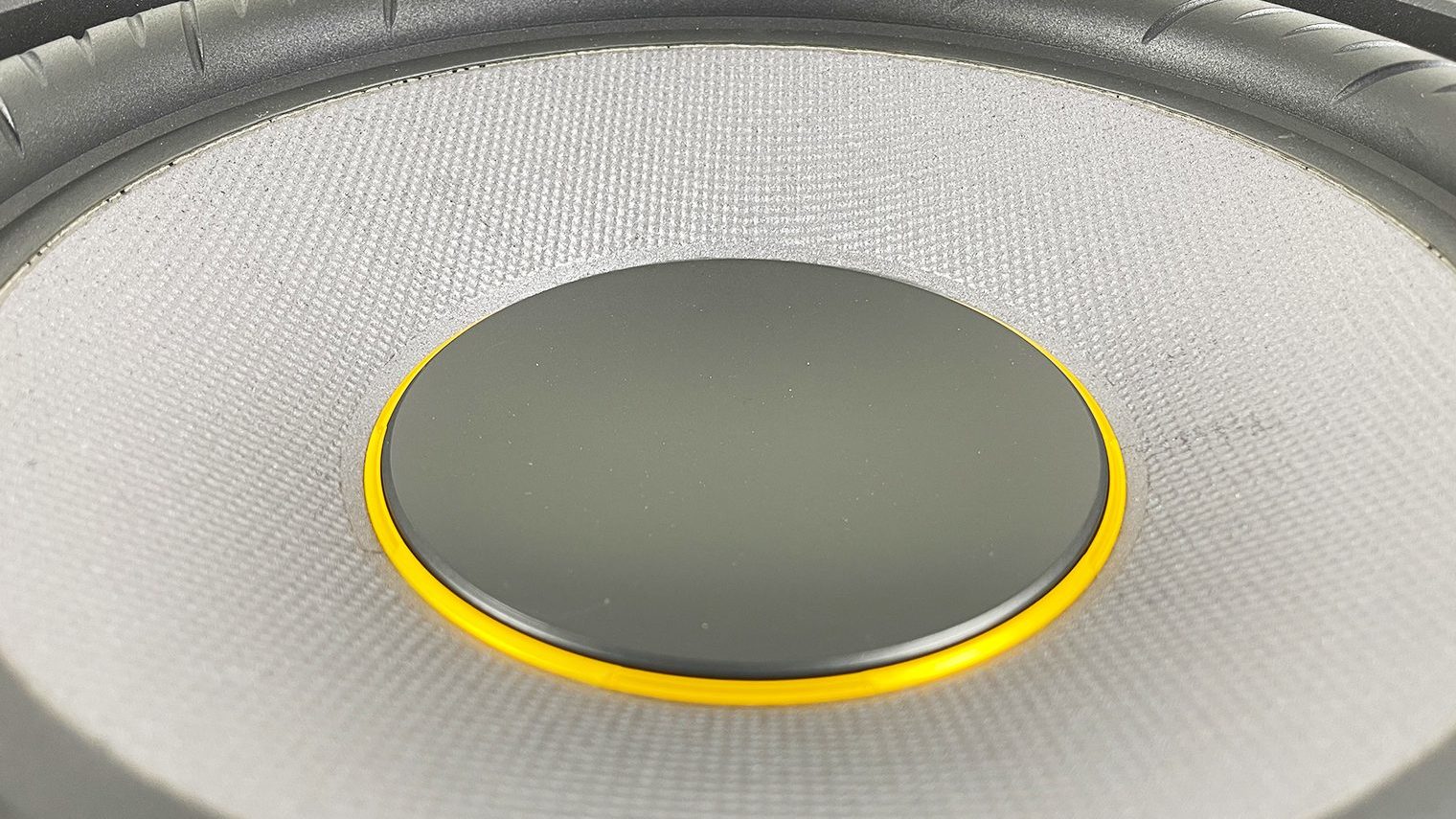

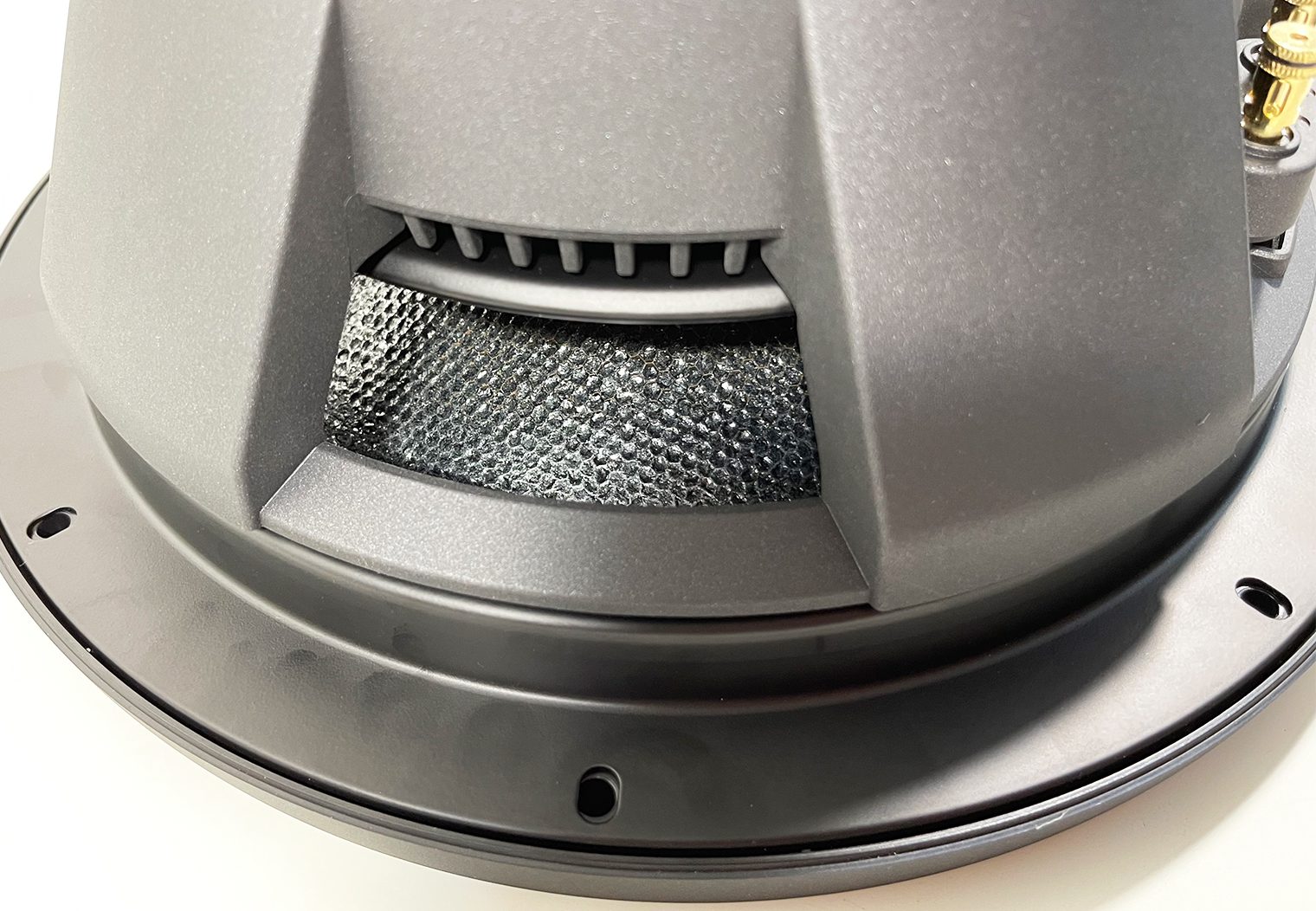
But for most people who are less interested in the composition of the material and more interested in why it matters, the important thing here is that when you see proprietary materials used on a cone like this, it mean that it is:
- Generally more expensive to manufacturer whether it’s R&D or just the material costs.
- It’s been heavily tested. As a part of the R&D process, the material is tuned and tested and in general it’s probably safe to say that it will outperform most traditional materials. Why would a reputable brand like Sony (or any other reputable brand) spend the money to test and manufacture a cone like this if it didn’t perform? So this is good to see.
And when engineers are testing different compositions of materials, they're are always looking for the best material that will have the perfect combination of:
- Mass/weight
- Strength/rigidity
- Damping
- Durability
Their lightweight rigid cellular cone is Sony’s choice for the material that achieves those goals. All of which impact things like efficiency, distortion and volume, among other things, depending on the combination of qualities.
Separated Notch Edge Surround
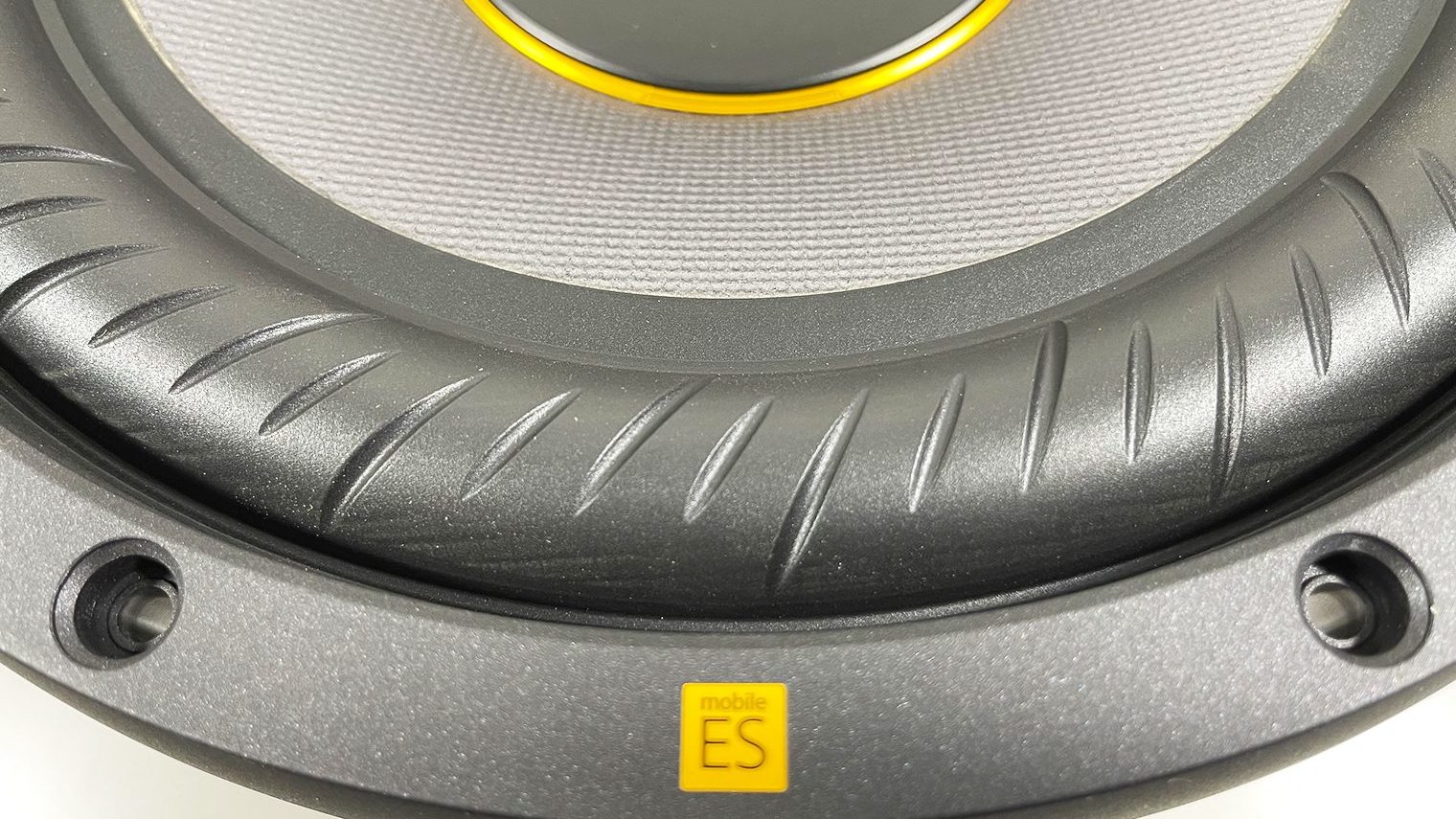
The other notable technology on these subs (and the Mobile ES lineup) that’s Sony specific is the separated notch edge surround. I haven’t seen it elsewhere on any other automotive speakers or subwoofers so this is an interesting innovative feature.
The surround is what’s responsible for giving the cone the ability to move vertically but prevents it from moving laterally. One of the first things I thought when I saw this design was about how this surround would place resistance on the cone. It's important that the pressure the surround puts on the cone is equal across its entire diameter, which is why you'll see that the notches are not in a random pattern. Rather, they're precisely placed in a repeating pattern to put equal pressure on the cone as it moves.
This design is supposed to allow the cone to move further vertically (X-Max) without sacrificing rigidity laterally. The further the cone moves, the more volume (to some degree). It's made from a rubber material too, which is good for durability and longevity.
And while we're on the surround topic, just outside of the surround you'll notice that these subwoofers come with a separate mounting ring. More for looks than anything but they come with one to cover up the actual mounting surface below and add a nice, clean finish to the outer edge of the subwoofer.
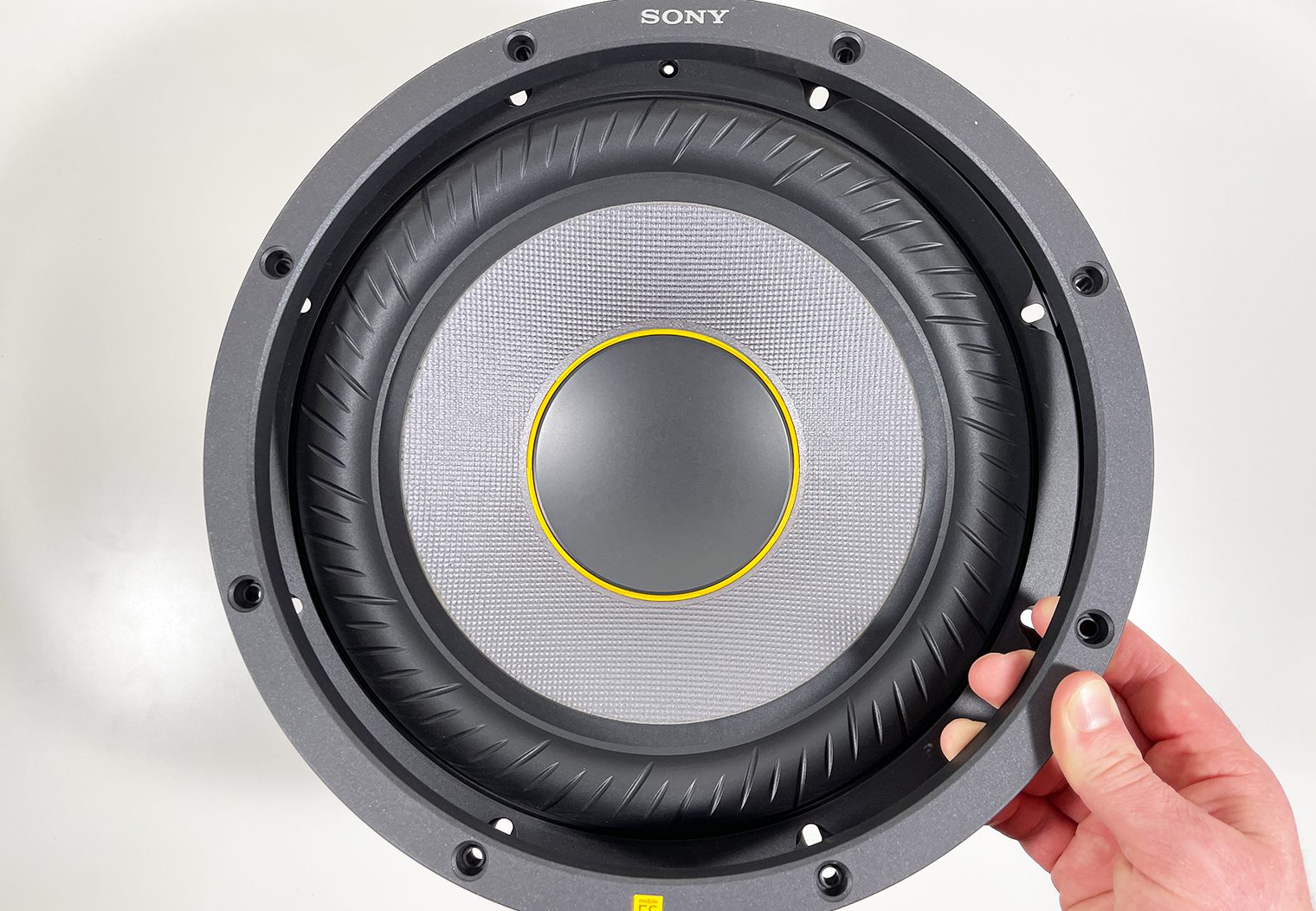
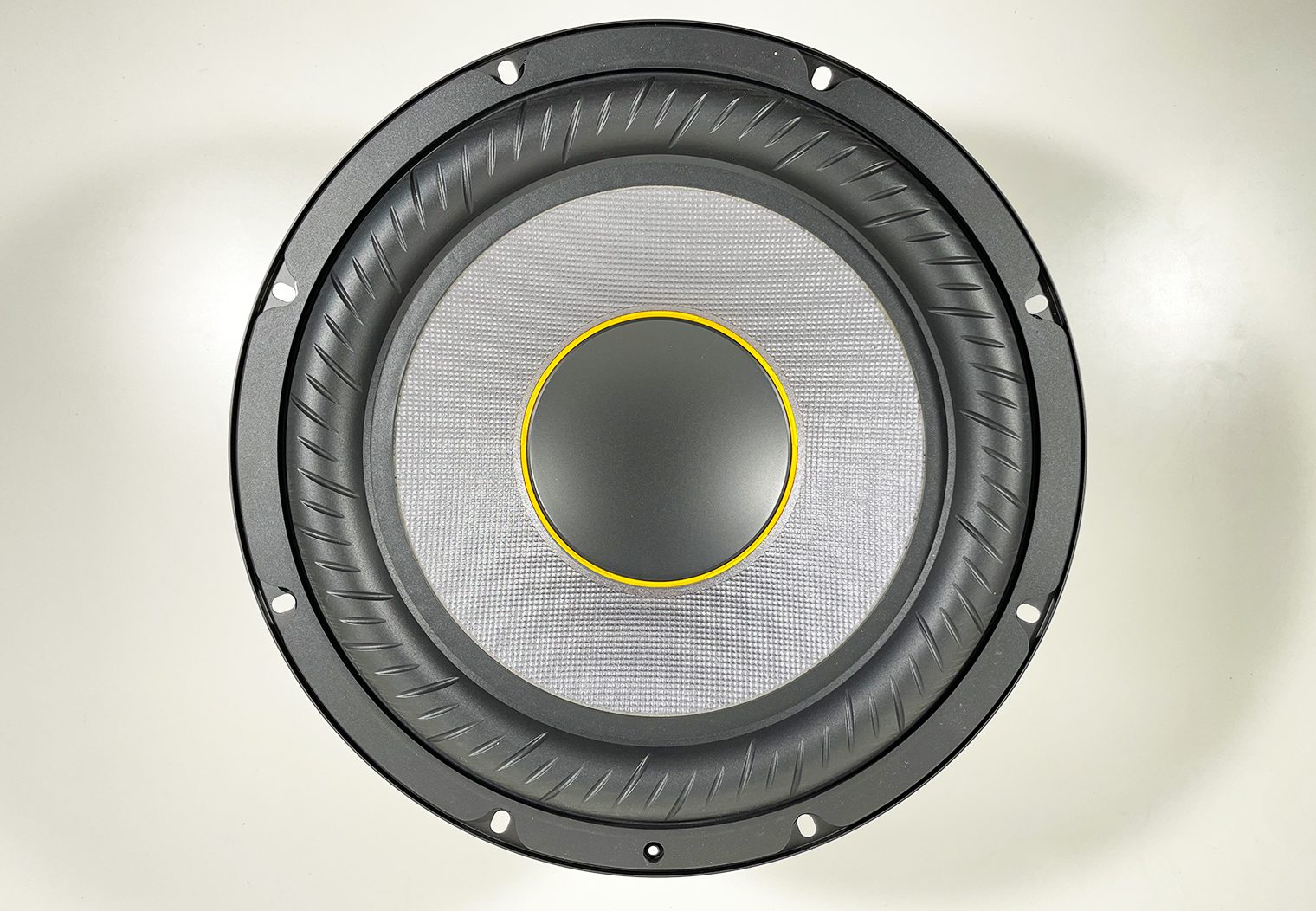
Subwoofer Structure – Beam & Cooling
When you flip the subwoofer to its back there's a few cool features that you don't see on some of the cheaper, entry level subwoofers. First of which is the basket (or frame). Sony calls it a five-beam frame and built-into the frame is a design that encourages air flow for cooling.
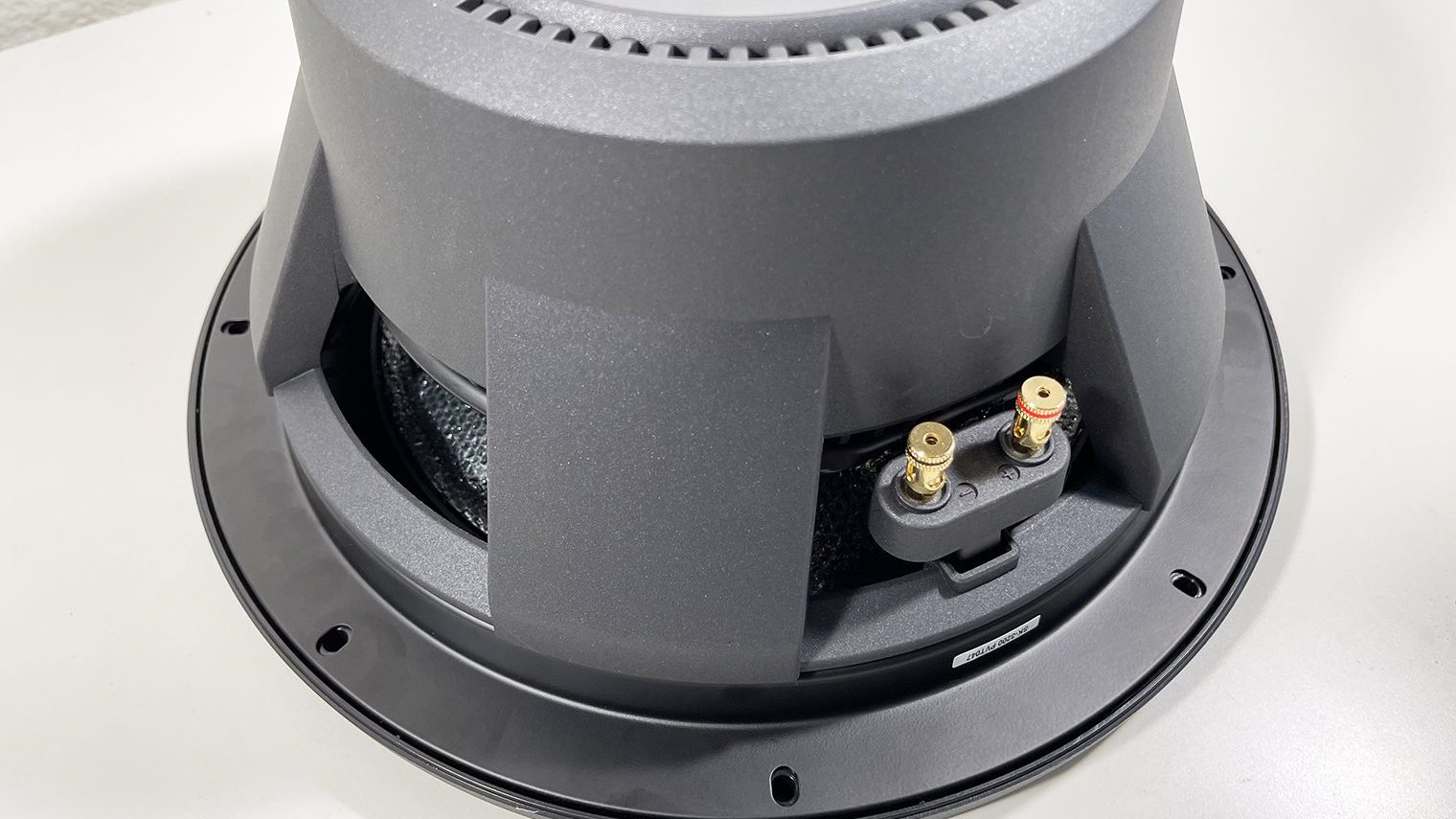
So you can see the beams in the photo above. There's 5 (duh). The frame is critical because the subwoofers put a lot of torque on the structure. If this frame were to flex, you’d hear it in the form of distortion or other noises while it’s under load. Four-beam frames are very common in the industry, so the additional beam provides more rigidity and support and ultimately prevents distortion.
You can also see little vents that encircle the motor and magnet structure. This is a clever design because it allows air to pass through along the sides of the motor structure to cool it, along with the voice coil. Heat can cause failures so, especially in the confines of a trunk or other space with limited air circulation, features like this are great for longevity but also for long durations of playing music at high volumes.
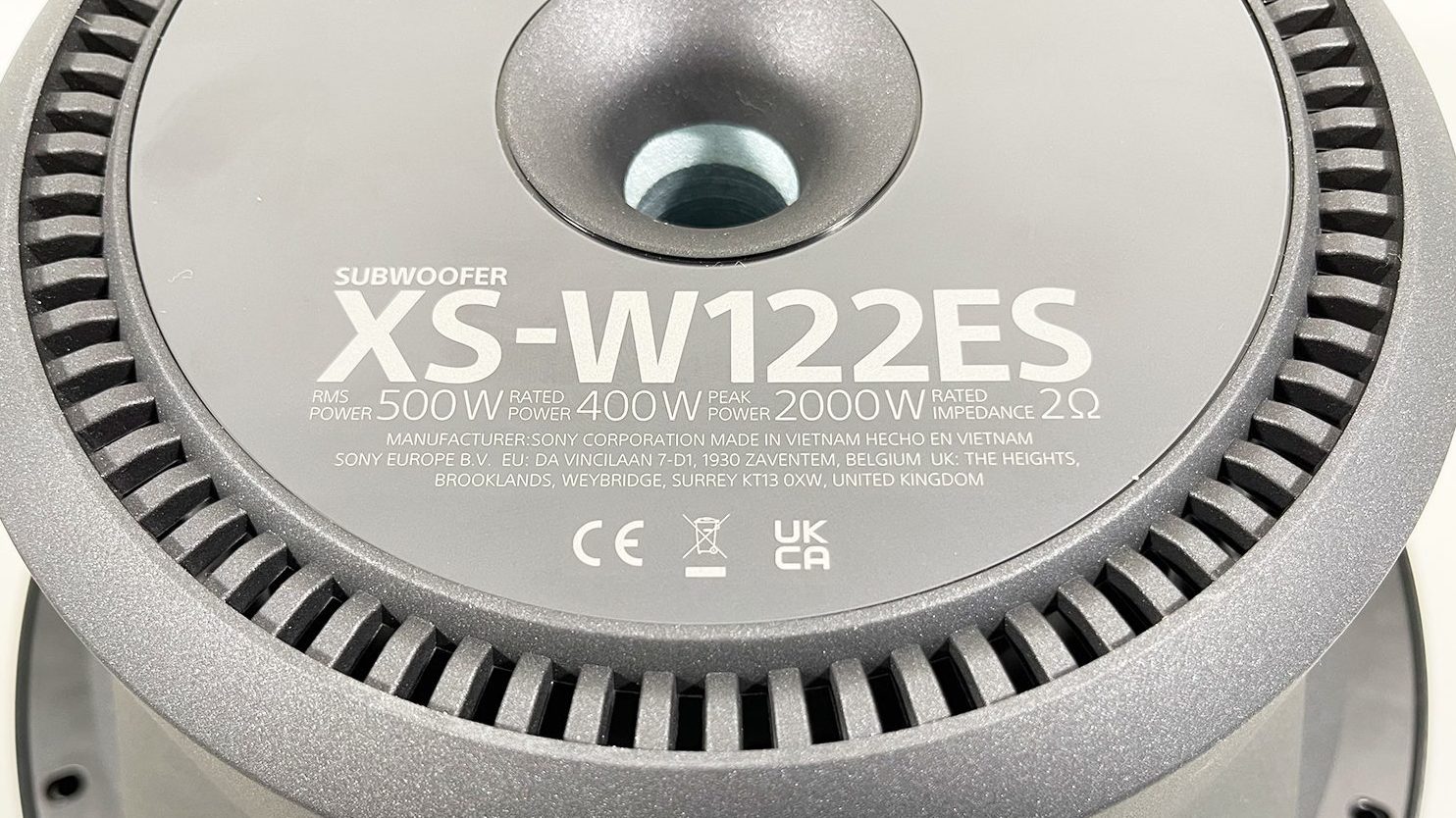
If you look a little deeper into the structure, you’ll see what’s called the spider. Sony calls this their progressive height rate spider. The spider is what’s responsible for keeping the inner part of the speaker, the pole, from moving left and right. Similar to what the surround does for the cone, the spider allows the pole to move vertically, but not horizontally.
Sony’s progressive height rate spider is designed to improve the vertical movement (aka height) or X-Max without sacrificing lateral movement. This is a tough one to really have an opinion on and it’s also tough to see what specs it impacts. But I think one thing to call out about Sony's Mobile ES lineup is that the spiders are optimized for each individual product. So, even though all of the subs and speakers in the Mobile ES lineup use the progressive height rate spider they’re tuned to each individually. For example the 10” subwoofer spider was tuned and optimized independently from the 12”. And even though you might not be able to see a big difference or hear one, the spiders play a huge role in the overall quality of sound and it’s just another good thing to see that Sony was specifically thinking through each of these types of components in an innovative way.
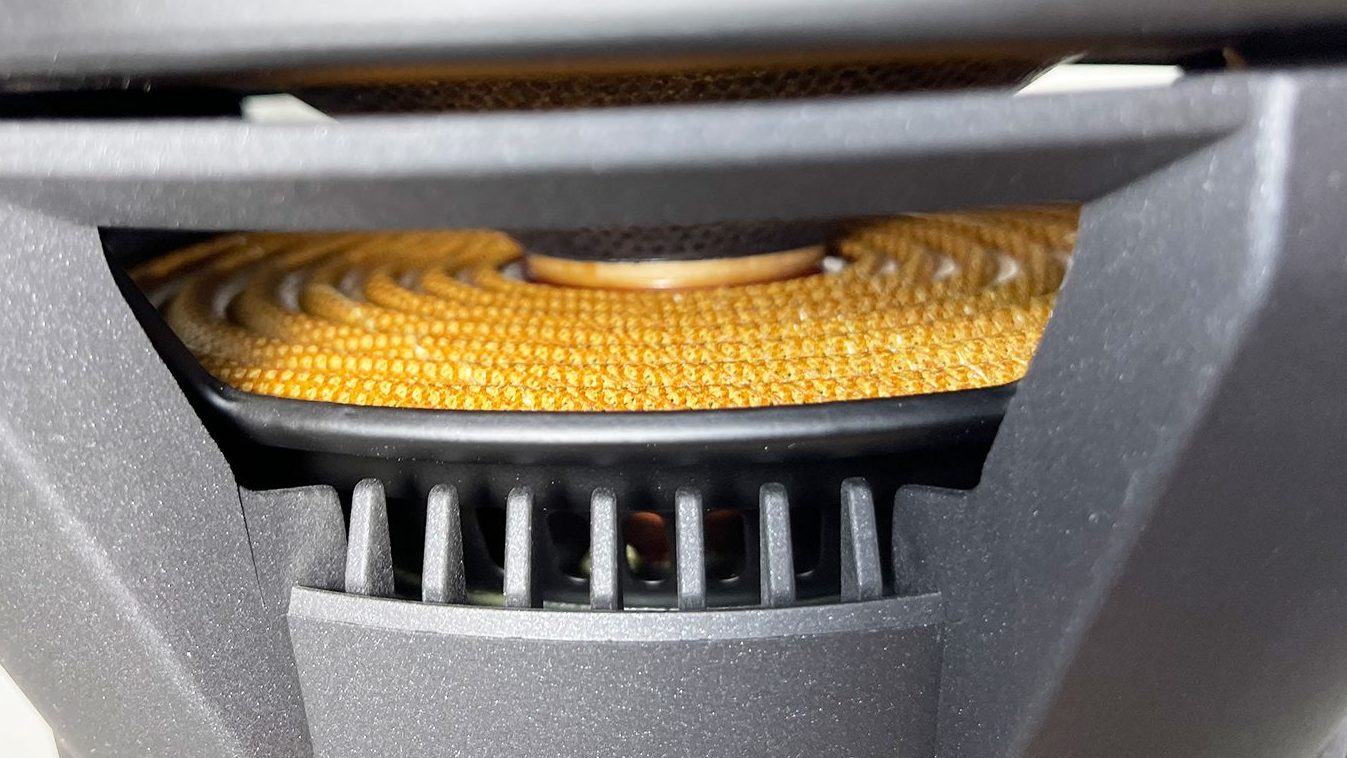
You can also see the ventilation/cooling design in this picture above up close and center that helps cool the voice coil. Pretty rad!
Magnet & Terminals
Last couple things to note here. The biggest component on the back side of the speaker is the magnet. Sony uses a Ferrite magnet for their subwoofers. There are benefits and drawbacks to Ferrite when compared to other materials like Neodymium but it's a very common magnet material used across a wide variety of high performing subwoofers.
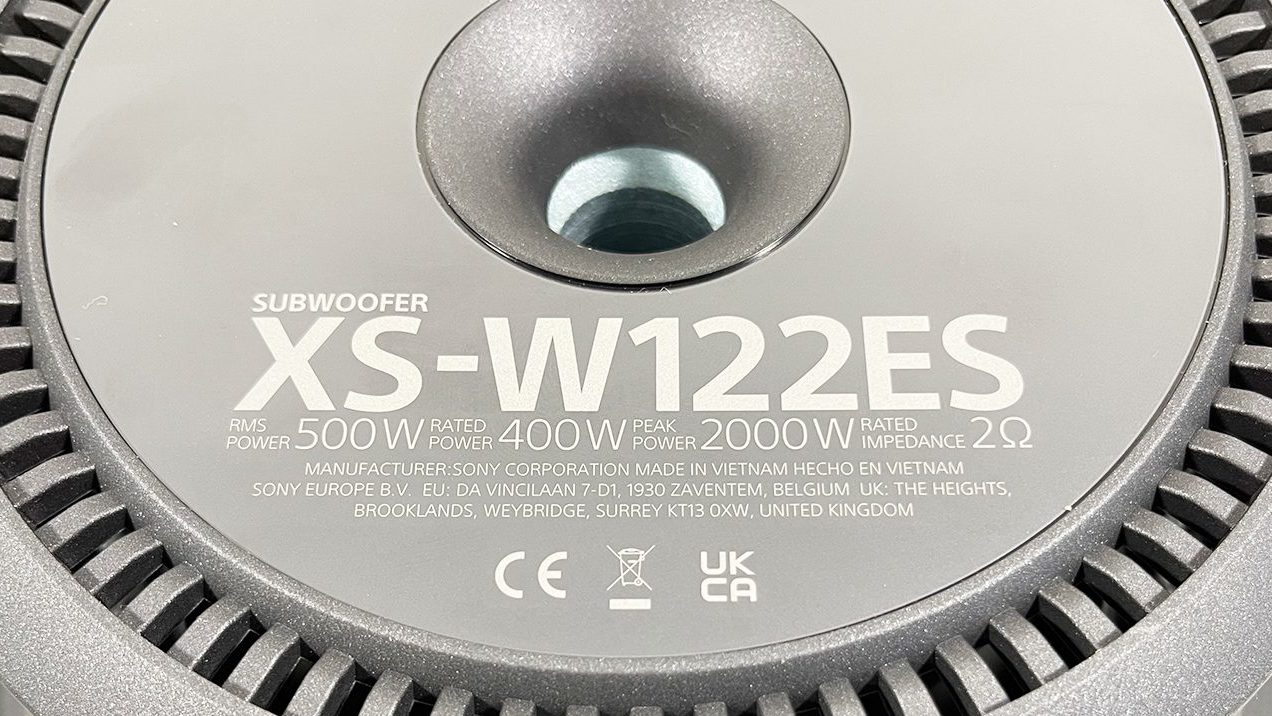
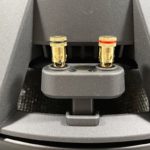
On the side of the motor, you'll find the terminals. They're gold-plated which is good for conductivity, and they're also spring loaded. Nothing too important to note here!
Conclusion
The entire lineup of Sony's Mobile ES speakers are beautiful, including their subwoofers. When I originally reviewed their speakers last year, I felt like the only component missing was the 12″ subwoofer. In fact, that was the one reason that held me back from placing these subs on our list of best car subwoofers in 2021. So I was excited when I found out that Sony was adding a 12” sub to their lineup.
I also tested the 10” sub when I installed a custom stereo on a VW GTI and was really impressed with the volume, clarity and frequency range. I think that the 12” is just going to give me more of all of that! So really excited to get this installed in a car and hear it in person.

